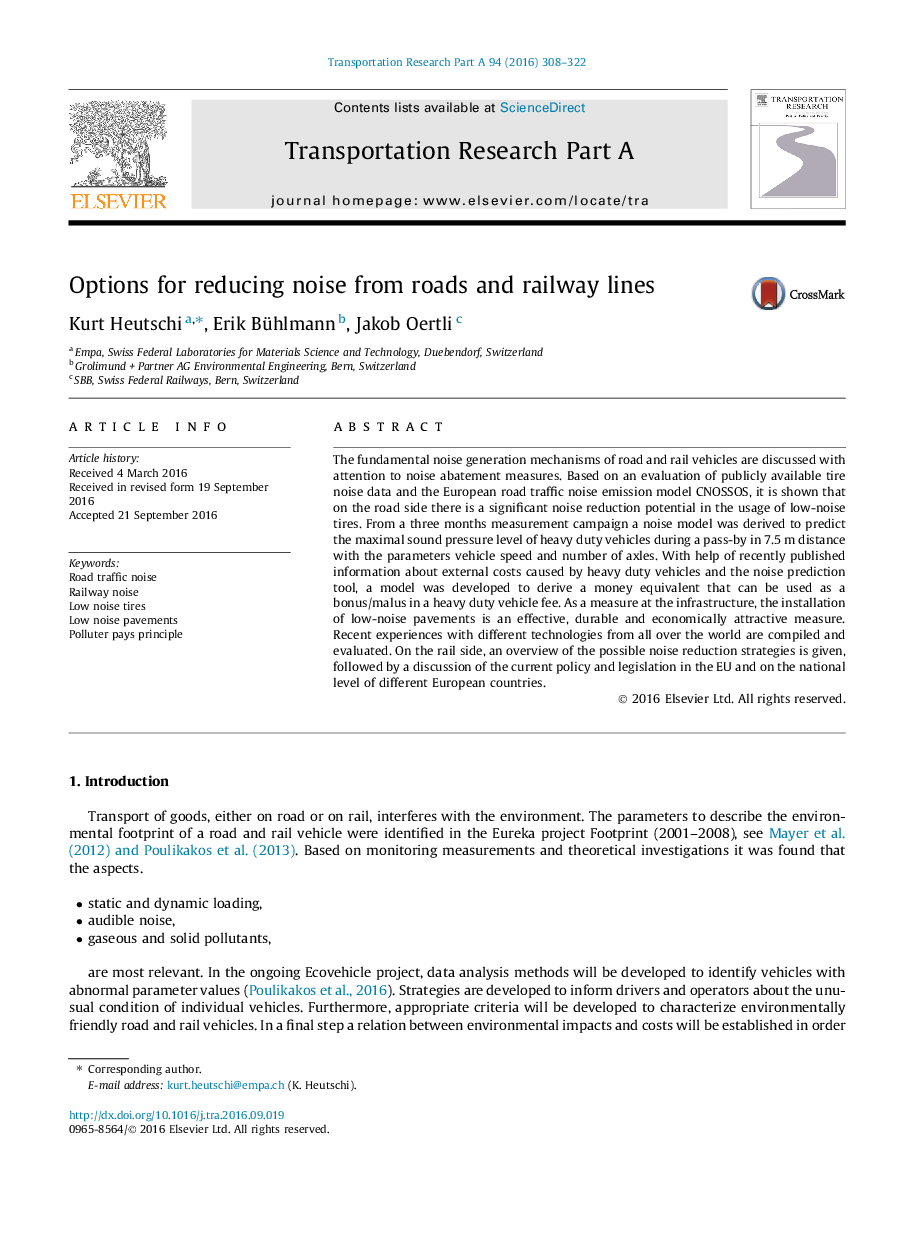| Article ID | Journal | Published Year | Pages | File Type |
|---|---|---|---|---|
| 4929034 | Transportation Research Part A: Policy and Practice | 2016 | 15 Pages |
Abstract
The fundamental noise generation mechanisms of road and rail vehicles are discussed with attention to noise abatement measures. Based on an evaluation of publicly available tire noise data and the European road traffic noise emission model CNOSSOS, it is shown that on the road side there is a significant noise reduction potential in the usage of low-noise tires. From a three months measurement campaign a noise model was derived to predict the maximal sound pressure level of heavy duty vehicles during a pass-by in 7.5Â m distance with the parameters vehicle speed and number of axles. With help of recently published information about external costs caused by heavy duty vehicles and the noise prediction tool, a model was developed to derive a money equivalent that can be used as a bonus/malus in a heavy duty vehicle fee. As a measure at the infrastructure, the installation of low-noise pavements is an effective, durable and economically attractive measure. Recent experiences with different technologies from all over the world are compiled and evaluated. On the rail side, an overview of the possible noise reduction strategies is given, followed by a discussion of the current policy and legislation in the EU and on the national level of different European countries.
Related Topics
Physical Sciences and Engineering
Engineering
Civil and Structural Engineering
Authors
Kurt Heutschi, Erik Bühlmann, Jakob Oertli,
